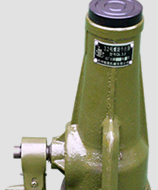Spiral jacks and hydraulic jacks are like two distinctly different "partners" in the mechanical field, with vastly different working principles. This difference makes them each have their own "rules" in terms of usage: the screw jack has its own unique features and can horizontally display its skills; Hydraulic jacks, on the other hand, are more "conventional" and can only operate vertically.
When the screw jack is working, there is a key point that must be kept in mind at all times, which is the support point of the base. You should know that the screw jack relies on the strong force transmitted between machines to work, and its load-bearing capacity is better than hydraulic jacks. However, it is precisely this strength that makes it a double-edged sword when used horizontally. If there is even a slight negligence, the reactive force will act like a wild horse that has gone out of control, launching an "impact" on the support point and causing serious damage.

Therefore, when we are preparing to use a screw jack for lateral operations, we must first carefully observe the condition of the support points. We need to see if its stability is sufficient to counteract the target it is intended to act on. If the stability of the support point is poor, or the weight is lighter than the target, it is like a power imbalance competition. During the operation, not only can the target not be pushed, but the force point will also move like a small boat out of control under the "pulling" of the reverse force, which undoubtedly brings huge safety hazards.
So, before starting the horizontal "mission" of the screw jack, it is necessary to observe the current situation carefully like a detective. Only by confirming that the support point is as solid as a rock can the operation be started with confidence.
Tag:
2025-11-26
2025-11-26
2025-11-26
2025-11-19
2025-11-19
2025-11-19
2025-11-12
2025-11-12
2025-11-12
2025-11-05